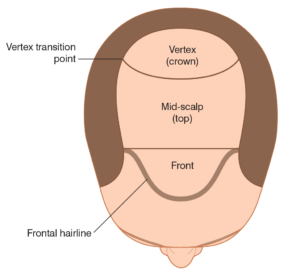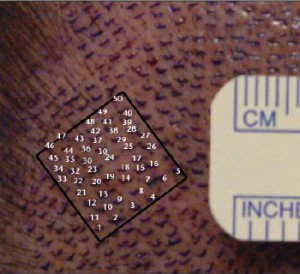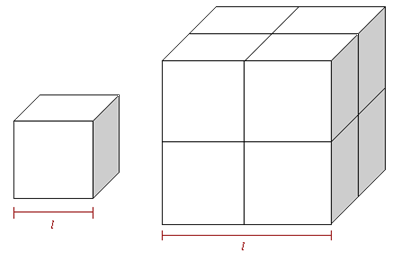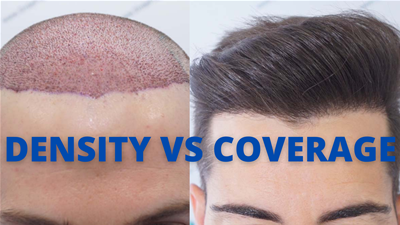Genetic hair loss is a condition that progressively gets worse over time. First, you might notice your hairline thinning. After a few years, you might notice the mid-scalp thinning, and after a while, you might see your crown thinning as well. So can you get coverage and density in one hair transplant? Keep reading.
What Is Coverage?
When someone describes coverage for surgical hair restoration, they refer to the surface area of the scalp that will be implanted with new hair. For example, you can transplant the hairline, mid-scalp, or crown (vertex), as seen in the diagram below.

Technically, it is possible to place hair throughout your entire scalp in one surgery, but there will be a disparity in density more on that later. So now that you know what coverage is and how it is referred to in surgical terms let's talk about density. The most coveted and talked about topic in the hair transplant industry.
What is Density?

Density refers to the number of grafts and, more specifically, the number of hairs placed within a square centimeter (cm2). There are a lot of variables to consider, so let's go down the list. Variable number one is donor density. The density of your donor will determine the number of hairs that a surgeon can harvest.
For example, someone with a dense donor supply may have an average of 2.8 hairs per graft. In comparison, someone with a sparse donor may have an average of 1.5 hair follicles per graft. Now let's say both patients had 2,500 grafts harvested. The individual with the dense donor would have 7,000 hair follicles. The individual with the sparse donor would have 3,750 hair follicles, almost less than half. So you see, the number of grafts becomes irrelevant because the person with the dense donor supply would have nearly double the density.
The other factor you must consider when looking at density is the thickness of your hair follicles. It's simple math, and believe me, I hate math just as much as everyone else does, but allow me to explain. Imagine these blocks are individual hair follicles. Which block would cover more area? The answer is pretty simple, right. Well, it is different with hair follicles on your scalp.

"What is baldness? Baldness is seeing a visible scalp. If you don't see the scalp, you're not balding - Dr. Konior." That quote is fundamentally accurate, especially when we talk about density or the visual appearance of thickness. So you see, even if you get more grafts, more hairs transplanted than someone else if they have double the hair thickness that you do, they will have less visible scalp, i.e., less baldness.
Conclusion
In most cases, you won't achieve both coverage and density simultaneously unless you have a small area of baldness. If you are Norwood 5 and above, you will need to accept that you will not have both density and coverage in one surgery. You will need multiple hair transplants to achieve either density or coverage. A surgeon may opt for low-density coverage and subsequently add density in further procedures. Another surgeon may treat a small area with high-density and then go for more coverage in subsequent procedures. Surgical planning is something that needs to be discussed in-depth before having a hair transplant. If you're interested in getting a hair transplant but want to discuss or create a master plan, please submit some virtual consultation HERE with patient-approved and accredited hair transplant surgeons.

